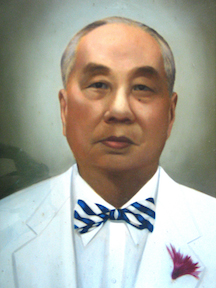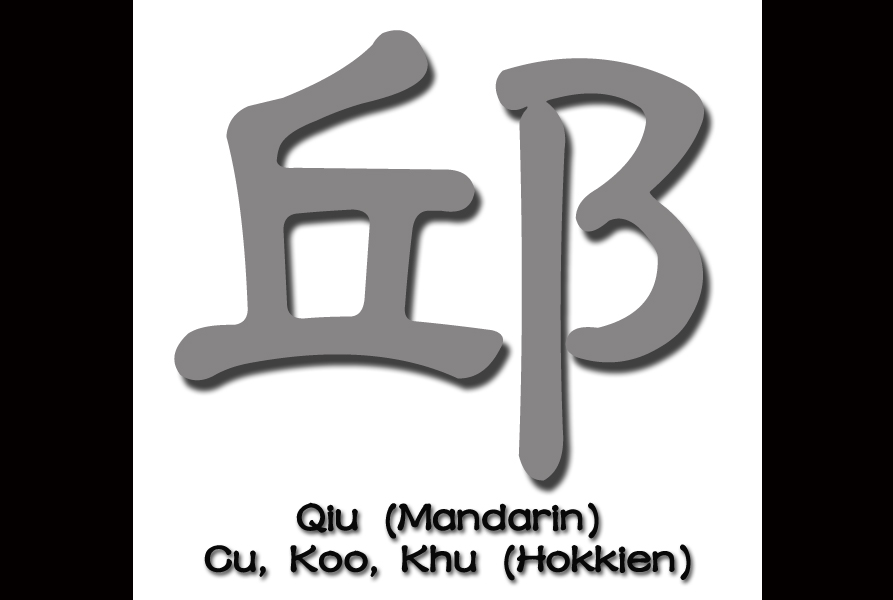First published in Tulay, Fortnightly Chinese-Filipino Digest 25, no. 5 (August 14-27, 2012): 5-6.
Surname 邱 (Cu, Koo or Khu in Hokkien, Qiu in Mandarin) ranks 30th among Chinese in the Philippines. In China, it ranks only 65th.
邱 was written as 丘 without the 阝 ear character on the right side. In fact, this was its original form. The ear character was added by imperial edict to honor China’s great sage Confucius (孔夫子).
There were two origins of 丘, both from names of two places that contained the character 丘 (which means small hill or mound). The first place was Ying Qiu (營丘), the capital of State Qi (齊) during the early West Zhou (西周) Dynasty (1027-771 BC).
Qi was a state conferred to Jiang Tai Gong (姜太公) for his service to Emperor Zhou Wu Wang (周武王). The original surname of Jiang Tai Gong was Lü (呂) but some of his heirs who stayed in Ying Qiu used the name of the place 丘 as their surname.
The other place is Wan Qiu (宛丘), a place in State Chen (陳), also of early West Zhou Dynasty. People who lived there also used 丘 as their surname.
As name of place, 丘 and 邱 were actively interchangeable in ancient times. In fact, before the Manchurians ruled China, the surname 邱 was always written as 丘.
But during the reign of Emperor Yong Zheng (雍正), 1678-1735, using the name 丘 was made taboo. He intended this to pay tribute and show respect for the great sage of China, Confucius, whose family and personal name respectively was Kong Qiu (孔丘).

(邱允衡)
Emperor Yong Zheng ordered that except for the 丘 characters that appeared in the Four Books (四書) and Five Classics (五經), all other occurrences of 丘, including surnames, must add the 阝 ear character to the right. Thus, the 丘 became 邱, and henceforth, the Cus owe the ear character on their surnames to the emperor.
This interesting case demonstrates the emperor’s power, so absolute that he can declare as taboo the use of names of great personalities, including his own.
Among the famous personalities of Chinese in the Philippines with surname Cu (邱), we have founding president of the Manila Chinese Chamber of Commerce (1904), Guillermo Cu Unjieng (邱允衡).
The Cuyegkeng family clan is also an old Tsinoy family descended from migrant ancestors in the 1800s. Also the benefactor of Kaisa Heritage Center, Benito Cu-Uy-Gam (邱宗波), industrialist and philanthropist, for whom the center’s main hall is named.
